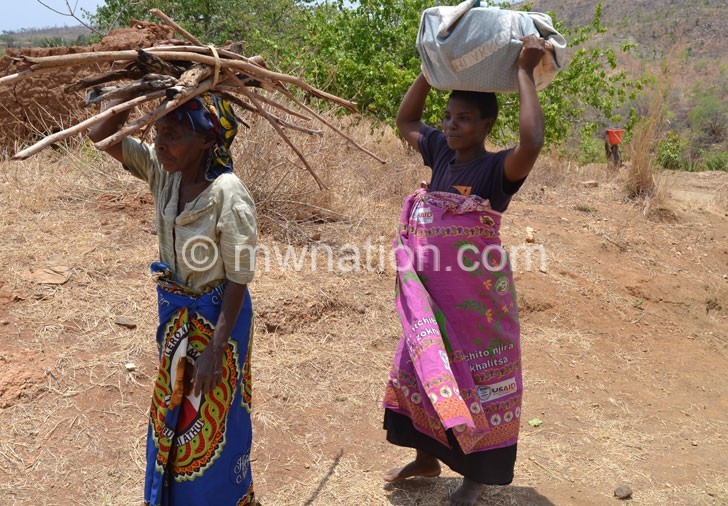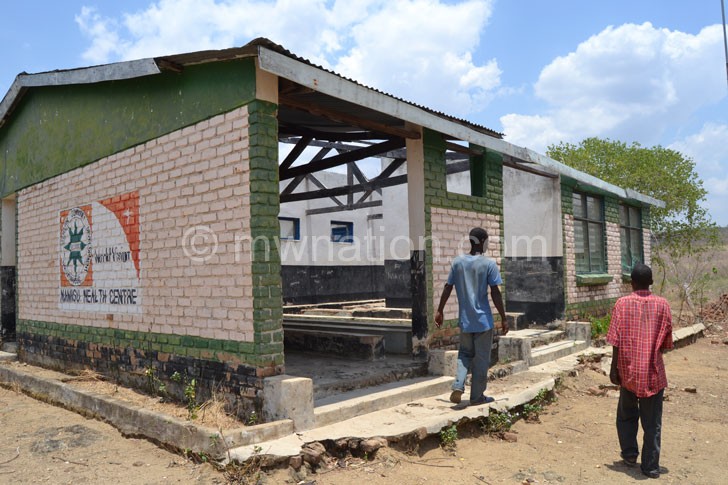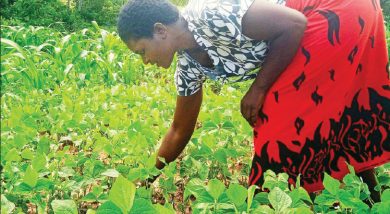Walk of despair
Her breathing was laboured and shallow. The cruel November heat was weakening her further as sweat poured freely all over her.
Still—in her ninth month of pregnancy and on bare feet—Martha Chilabade trudged on as she braved the humid air to reach a hospital and bring life into the world.

Balanced on her head was a load of foodstuffs and other materials necessary for her unborn child; adding more burden to the heavily pregnant woman, who also has two children.
Her feet were swollen—either as part of the burdens of the pregnancy or the effects of the long, desperate walk to deliver her baby.
When The Nation reporter met her with her mother at midday on Thursday, she had trekked 22 kilometres (km) from her village towards the M1 Road at Senzani Trading Centre where she would get a bus to Ntcheu District Hospital.
But the 22km slog was not even half the distance she would walk. The whole journey is more than 50km on her tender feet.
She had left home at 3am with her mother—who had carried firewood on her head for use at the hospital—and hoped to be at the bus stop by 5am.
Between them, the two could not raise K8 400 to pay a motorcycle taxi commonly known as kabaza, to save them from the 11-hour walking ordeal.

With traditional birth attendants (TBAs) banned, today, women from about 60 villages in Traditional Authority (T/A) Phambala in Ntcheu District have to endure the 50km distance on foot before they reach where they can get public transport for another 42 km road trip to access safe delivery.
This is the case because government abandoned the life-saving facility, Namisu Health Centre, in their vicinity back in 2007.
To get to Senzani means crossing rivers and shortcuts for a majority who cannot afford the K4 200 one-way fare for kabaza per passenger.
In the company of her 71-year-old mother, a former TBA, Chilabade, 30, said: “I am in the ninth month of my pregnancy, almost due for delivery. So, it is difficult for me to walk. I left home around 3am. I am expecting to reach Senzani at around 2pm and by five o’clock I will be at the hospital.”
Chilabade, who is on separation from her partner, had already covered about 22km when we met her as we headed in different directions.
She earns her living by selling mangoes and her business, she said, does not generate enough for her to hire a motorcycle taxi.
Said Chilabade: “I needed to have about K20 000 for transport to the hospital, which I cannot afford. Actually, I was supposed to be at the hospital by last month, but I did not make it because I was taken ill and couldn’t walk.”
The community in the area had a health centre constructed by World Vision Malawi and handed over to the Ministry of Health (MoH) in 2005.
But since MoH took charge of Namisu Health Centre before abandoning it, government has failed to run it, depriving the community access to skilled health workers.
Ntcheu district health officer Mike Chisema confirmed visiting the place and conceded that he left an angry man after seeing the state of the community.
In a telephone interview yesterday, he said: “It is very far, but still people walk to the district hospital.
“I have tried my best to mobilise companies that we have a facility in the area, including reviving the abandoned structure, but it has not worked.”
Dorothy Ngoma, president of the National Organisation of Nurses and Midwives in Malawi, asked the community leaders to take duty-bearers to task to revive the health centre.
She said: “I am sure those people have a member of Parliament [MP], chiefs and others in positions. What are they doing? They need to fight until there is a hospital.”
She also asked government to find a lasting solution, saying: “Those people pay tax. This community needs to have a midwife, medical assistant, nurses and clinicians. What is government doing?”
The development has angered Malawi Health Equity Network (Mhen) executive director George Jobe who has asked MoH to revive the health centre.
He said: “This is very sad, of course I know that people are walking long distances to access health services, but this case has saddened me.
“As we wait for government to revive the health centre, there is need for an outlet clinic so that these people should not continue suffering.”
In 2007, the Malawi Government banned TBAs who assisted women in the rural areas when giving birth.
According to the Malawi Demographic and Health Survey of 2015/16, the country’s mortality ratio is at 439 per 100 000 live births.
The survey also found that 56 percent of women face challenges to access health facilities due to long distances to the hospital and due to this, 24 per cent of births occur at home.
Reads the report: “About 86 percent of women in urban areas are more likely to deliver in a health facility than 71 percent in the rural areas.”
Ntcheu South legislator Damson Chimalira (Democratic Progressive Party-DPP) said he was aware of the problem in the area.
He said he was in the process of identifying a contractor to use Constituency Development Fund (CDF) to revamp the abandoned health centres which provided maternity services.
MoH recommends that people should not walk more than five kilometres to access a health facility, according to MoH spokesperson Joshua Malango.n





